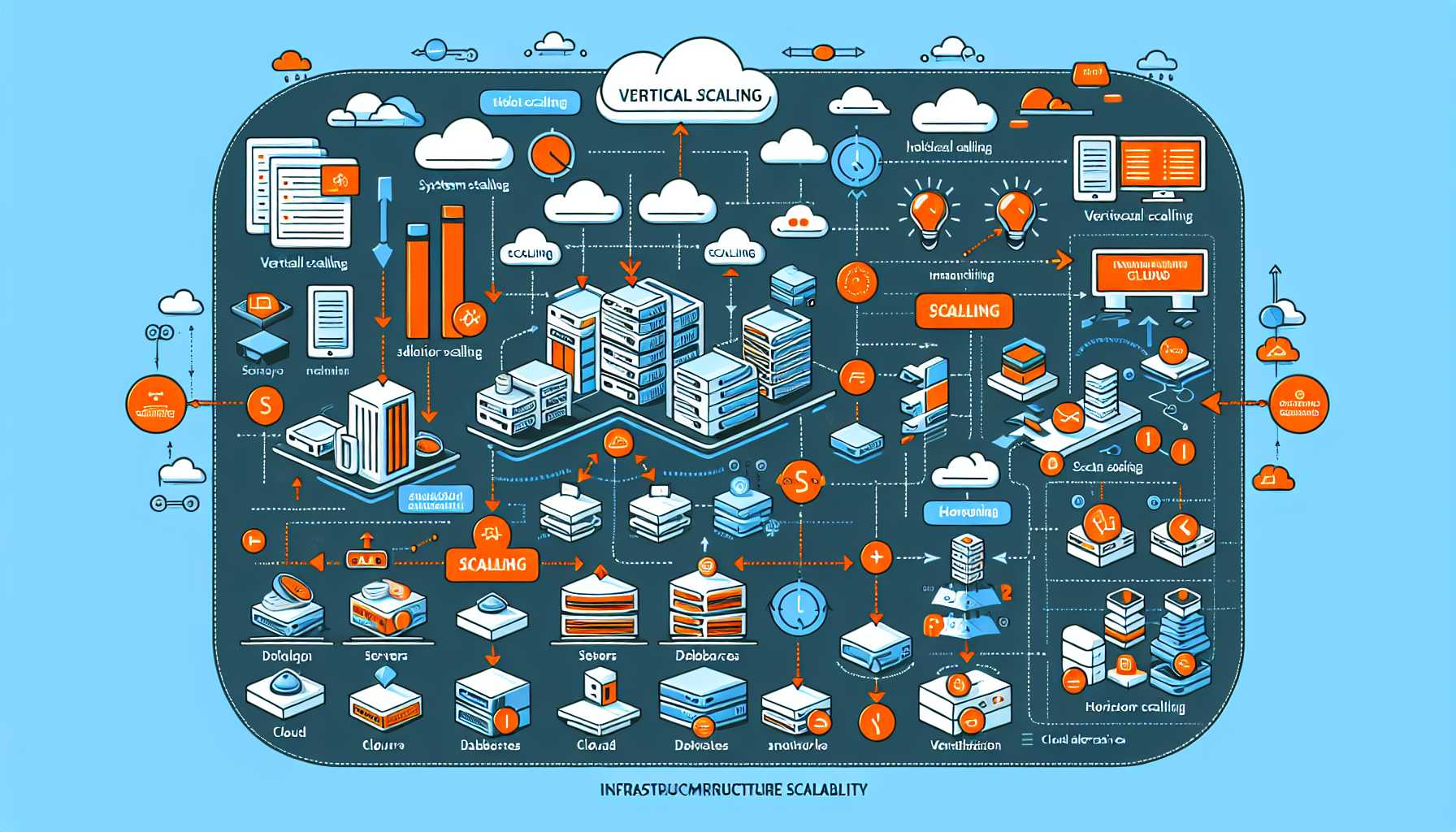Welcome to another installment of our deep dive into the intricacies of product management in the tech industry. Today, we tackle a critical aspect that can make or break the long-term success of a software product: scalability and infrastructure challenges.
As seasoned product managers, we’ve all witnessed the rapid evolution of software capabilities. However, the one constant that refuses to budge from the priority list is the issue of scaling a software product effectively. A common trap many of us have fallen into at some point in our careers is not giving scalability the forethought it requires.

The Concept of Scalability
In my experience, scalability should not merely be an afterthought. Rather, it should be a driving factor from the inception of the product. Scalability often gets compartmentalized into two categories: horizontal (or scaling out/in) and vertical (or scaling up/down).
Vertical scaling equates to adding more power to your existing machines, while horizontal scaling involves adding more machines to your infrastructure. Each has its place, but early on, my bias leaned heavily toward vertical scaling until I encountered a situation that changed my perspective forever.
A Personal Tale of Scalability
I was leading a product team at a thriving startup. We had a service that saw exponential growth, both in user base and data volume. Initially, we scaled vertically, upgrading our servers to handle the increased load. This worked until the day we maxed out the highest available specs.
- Assess your product’s scalability needs early on.
- Implement scalability strategies proactively, not reactively.
- Test scalability regularly and thoroughly.
- Understand the trade-offs between vertical and horizontal scaling.
- Invest in infrastructure that supports elasticity.
The day our server maxed out, our only option was to scale horizontally. However, our architecture was not designed for this, and we faced significant downtime during which we had to refactor significant parts of our system. This experience underscored the importance of planning for both vertical and horizontal scalability.
Strategies for Scalability
Developing a scalable infrastructure begins with the right strategies. Over the years, I’ve compiled a robust checklist that I reference at the start of every project:
- Architect for scalability from the ground up using patterns that allow for distributed systems.
- Embrace cloud-based solutions that offer elasticity—a term that refers to the ability of the system to grow and shrink dynamically.
- Incorporate monitoring tools to keep a vigilant eye on performance metrics.
- Opt for microservices where possible to isolate and scale parts of the infrastructure independently.
- Load testing is your friend—not just before product launches but as a regular checkup to ensure you can handle unexpected surges.
- Invest in a strong DevOps culture to automate your scaling processes.
Frameworks and Tools for Scalability
To navigate scaling, familiarize yourself with frameworks and tools designed to make the task more manageable. In one of my earlier roles as a product manager at a mid-sized SaaS company, we leveraged the SCALE framework: Simplify architecture, Cloud adoption, Automate everything, Load balancing, and Elastic infrastructure.
Cloud Solutions & Elasticity
The rise of cloud solutions such as AWS, Azure, and Google Cloud has revolutionized how we address scalability. AWS’s EC2 instances and auto-scaling groups have been personal game-changers in managing infrastructure demands. Cloud solutions offer the promise of virtually infinite scalability, with the added benefit of a pay-as-you-go model, which aligns operating expenses with revenue growth.
The Human Factor
Finally, one must not forget the human aspect. Scaling a product is not just about technology; it’s about leading and scaling your team alongside the product. Your team needs to be agile, resilient, and knowledgeable about the latest in scalability practices.
Infrastructure and scalability are complex beasts, but with the right mindset and toolkit, they can be tamed. Embrace the challenge, plan meticulously, and scale wisely. Your product’s future depends on it.
Thank you for joining me on this journey through scalability challenges in software development. Remember, your product’s scalability is only as strong as the weakest link in your infrastructure or team. Plan, prepare, and prosper!
